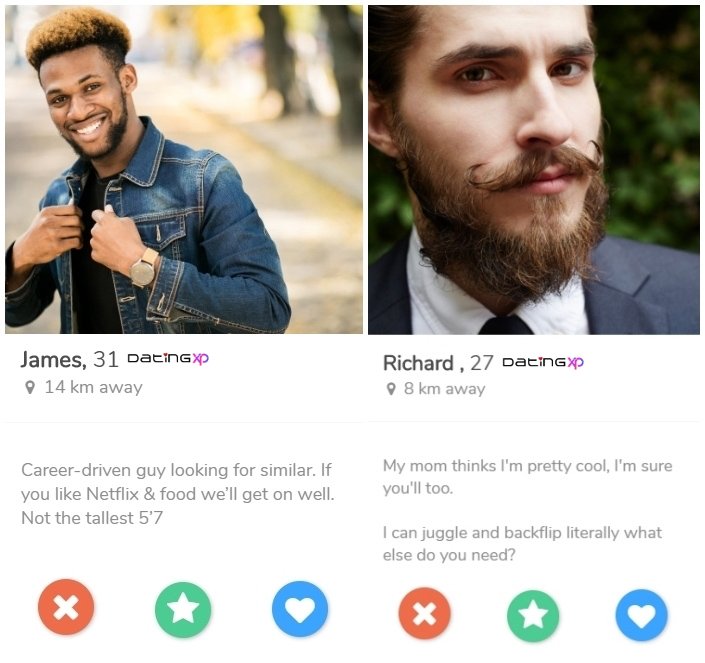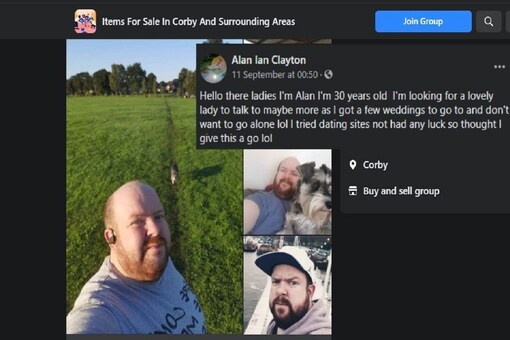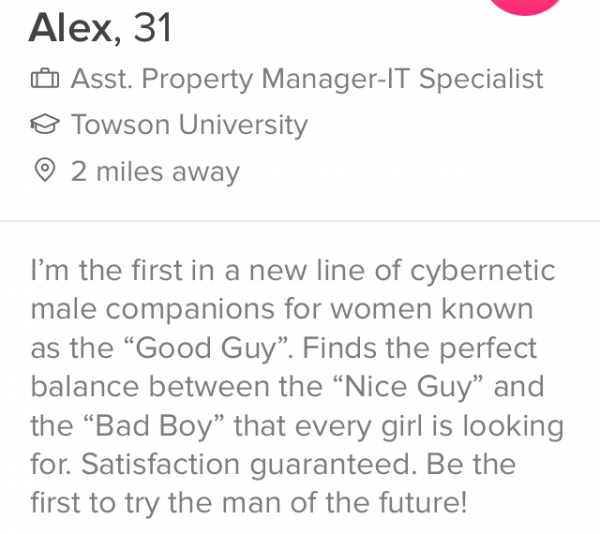What To Sat About Who Lm Looking For In A Man On A Dating Site
Looking for: man. My name is Cindy. I am never married christian white woman without kids from Las Vegas, Nevada, United States. Now I'm looking for Elite Dating App Grinnell new relationships. I want to meet a man, love of my life. Mar 08, 2020 Telegram Dating Groups 2020: 40+ Real Telegram Dating Channels Links. Indian and Pakistan Muslim Girls Whatsapp Numbers Looking For Friendship. Countries May 20.
- What To Sat About Who Lm Looking For In A Man On A Dating Site Who Makes
- What To Sat About Who Lm Looking For In A Man On A Dating Site Quotes And Page
- What To Sat About Who Lm Looking For In A Man On A Dating Site Crossword Clue
Making a good first impression.



Posted September 6, 2016 Reviewed by Ekua Hagan
You’ve found a dating site you want to use, and you’ve created a profile, complete with your most flattering photos. The next stage is either to sit and wait to be contacted by a potential date, or to look through the site and proactively start sending messages to potential dates yourself.
Surely, one of the things any online dater would want to know is what type of first contact message is most likely to draw a positive response. Should it be humorous, should it be factual, or should you just introduce yourself? Further, exactly how much should you say about yourself in this message?
The Common-Sense Approach
Here are three tips that may increase your chances of a reply to your first contact message:
- Pay some attention to what the recipient has said in their profile description to show that you have actually taken an interest in them. Don’t just send generic messages. Sites such as Match.com allow users to respond by giving 'winks,' although this type of communication may also be perceived as low-effort or generic.
- Don’t just make a statement in your message; ask a question. Asking a question allows someone to respond, which is more difficult with a statement. And use the recipient’s name—it’s friendlier.
- Be honest about yourself. We know that it is easy to establish a degree of rapport by saying you have similar interests to someone else, but there is really no point saying that you share an interest in collecting strange bookmarks if this is not really an interest of yours.
What the Research Says

A study conducted by Schöndienst and Dang-Xuan (2011) examined which style of first contact message was most likely to receive a reply. The researchers carried out an ambitious analysis of 167,276 first-contact messages sent by 3,657 users. The results suggest that the likelihood of a first message receiving a response depends on several factors:
- Lower use of the personal pronoun I.
- Lower use of leisure words such as movie.
- More frequent use of the word you.
- More frequent use of words such as relationship and helpful.
Surprisingly, they did not find that using negative words (presumably those such as dislike, can’t, or disinterested) has an adverse effect on responding.
Should You Play it Cool?
If you are the recipient of a first-contact message on a dating site, is it better to play it cool and not show too much initial interest, and make the message sender wait a while for a reply? Contrary to what we might think, it has been demonstrated that eager replies are not perceived as a turn-off. Rather, the faster the reply to a message, the more likely it is that communication will continue (Fiore, Taylor, Xhong, Mendelsohn, and Cheshire, 2010).
Who Makes First Contact?
Are there gender differences in who is more likely to make first contact? In their study, Hitsch, Hortacsu and Ariely (2010) found that:
- Males viewed more than three times more dating profiles than females;
- Males were more likely to make contact with a female after viewing her profile, compared to females making contact with males after viewing male profiles;
- On average, males sent more than three times more first contact messages than females.
When it comes to responding, Fiore et al (2010) found that males replied to more first-contact messages than females (26 percent compared to 16 percent).
These gender differences may be accounted for in terms of error management theory(Haselton and Buss, 2000). This theory suggests that because of the relative risks that reproduction poses to males and females, males tend to overestimate female sexual interest (known as an overperception bias). Because reproduction poses a greater risk to females, they have evolved to be more cautious and judicious during interactions with males.
Other Factors Influencing First Contact
Hitsch and colleagues (2010) also found that:
- Both males and females tend to make contact with potential dates who are similar to themselves in terms of religion, race, political persuasion, educational level, relationship status, and whether they have children or not.
- Both males and females were more likely to contact potential dates who stated that they had a higher income and those who had been rated as physically attractive by independent judges.
Further, despite the fact that those using online dating reported that they do not necessarily pursue the most attractive partners, Hitsch and colleagues (2010) noted that online daters pursue people who they find to be most desirable, rather than those who match them in terms of attractiveness. In other words, those using online dating attempt to find the best and most attractive date they can instead of looking for someone similar to themselves in terms of attractiveness.
Etiquette and Failure to Receive a Response
In face-to-face communication, if we ask someone a question and are ignored, we'd consider such behavior to be rude. However, in the online dating world, it is not uncommon for messages to go unanswered and ignored, and such behavior is not normally considered to be offensive. One possible reason for this is the degree of online disinhibition (Suler, 2004) users experience in an environment in which they feel relatively anonymous. Even relatively impersonal responses such as simply saying 'no, thank you,' with no explanation are considered acceptable.
Some people using online dating sites may not look at their messages that often or may have found someone and left the dating site altogether, even though their profile is still present. Each of these things may account for their failure to reply. Given this, and the normal etiquette of online interaction, if you don’t receive a response to a first message, keep trying with others.
Visit my website.
What To Sat About Who Lm Looking For In A Man On A Dating Site Who Makes
References
What To Sat About Who Lm Looking For In A Man On A Dating Site Quotes And Page
Fiore, A. T., Taylor, L. S., Zhong, X., Mendelsohn, G. A., and Cheshire, C. (2010). Who’s right and who writes: People, profiles, contacts, and replies in online dating. Retrieved from http://www.computer.org/csdl/proceedings/hicss/2010/3869/00/index.html.
Hasselton, M. G. & Buss, D. M. (2000) Error management theory: A new perspective on biases in cross-sex mind reading. Journal of Personality and Social Psychology, 78(1), 81-91.
Hitsch, G. J., Hortaçsu, A., & Ariely, D. (2010). What makes you click? Mate preferences in online dating. Quantitative Marketing and Economics, 8, 393–427.
Schöndienst, V., and Dang-Xuan, L. (2011). The role of linguistic properties in online dating communication—A large-scale study of contact initiation messages. Proceedings of the 15th Pacific Asia Conference on Information Systems, Paper 166, Brisbane, Australia
What To Sat About Who Lm Looking For In A Man On A Dating Site Crossword Clue
Suler, J. (2004). The online disinhibition effect. Cyberpsychology and Behaviour, 7 (3), 321-326.